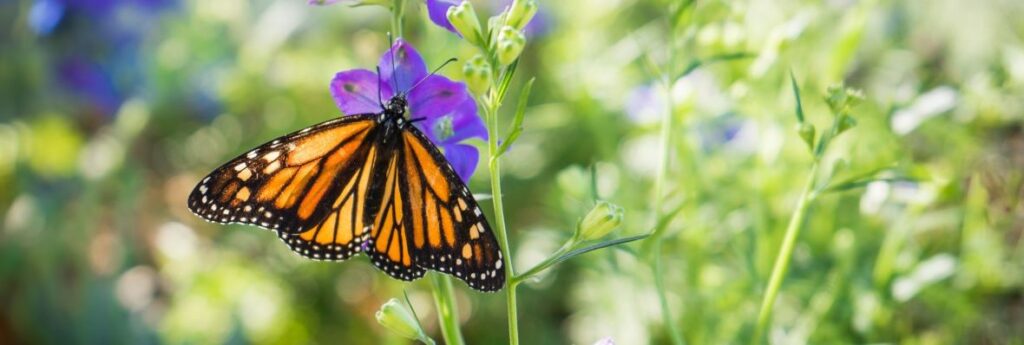Mexican experts say that 35 percent more monarch butterflies arrived this season to spend the winter in mountaintop forests compared to the previous season, inspiring a similar migration of tourists to visit the country’s popular butterfly reserves.
More than 160,000 tourists travelled to butterfly reserves in Mexico in 2021, a 132% increase over the number that visited during the coronavirus pandemic in 2020.
Experts say the rise may reflect the butterflies’ ability to adapt to more extreme bouts of heat or drought by varying the date when they leave Mexico.
The government commission for natural protected areas said the butterflies’ population covered 2.84 hectares this year, compared to 2.1 hectares last year.
The annual butterfly count doesn’t calculate the individual number of butterflies, but rather the number of hectares they cover when they clump together on tree boughs.
Each year the monarchs return to the United States and Canada on an annual migration that is threatened by loss of the milkweed they feed on north of the border, and deforestation in the butterfly reserves in Mexico.
Gloria Tavera, the regional director of Mexico’s Commission for National Protected Areas, said logging in the butterflies’ wintering ground rose by about 4.5% this year, to 13.9 hectares. However, fewer trees were lost to fire, drought or plant diseases and pests. So overall tree loss in the 2021-22 season was about 18.8 hectares down from 20.6 hectares in the 2020-21 season.
The butterflies traditionally arrive in the mountaintop pine and fir forests west of Mexico City around the beginning of November. They normally leave for the US and Canada in March.
But Tavera said that 2021 was unusual, because the monarchs began leaving in February; that allowed them to get out before drought and heat hit just north of border in April and May.
“They are beginning to adapt to extreme climate conditions,” Tavera said.
Strangely, this year, the butterflies stuck around in Mexico longer than usual. “They left very late. We still had butterflies in April,” Tavera said. It remains to be seen in next year’s figures whether that strategy worked for them.
While activists and students in the United States and Canada have been urged to plant milkweed to make up for the losses of the plant due to the clearance of farm and pasture land and the use of herbicides, that strategy has backfired in Mexico.
Tavera urged Mexicans not to plant milkweed in Mexico, saying it might disrupt the migration by encouraging monarchs to stick around, rather than leave for the north. She also urged people not to breed monarchs in captivity – they are sometimes released at weddings or other celebrations – saying that could spread diseases among the insects.
Jorge Rickards of the WWF environmental group said that, despite the increase this year, “this continues to be a migration phenomenon at risk.”
The local collective farm groups that own much of the forest in the reserves depend on tourism for income, and to discourage logging.
Drought, severe weather, and loss of habitat – especially of the milkweed where the monarchs lay their eggs – as well as pesticide and herbicide use, and climate change, all pose threats to the species’ migration. Illegal logging and loss of tree cover due to disease, drought and storms also continues to plague the reserves.

